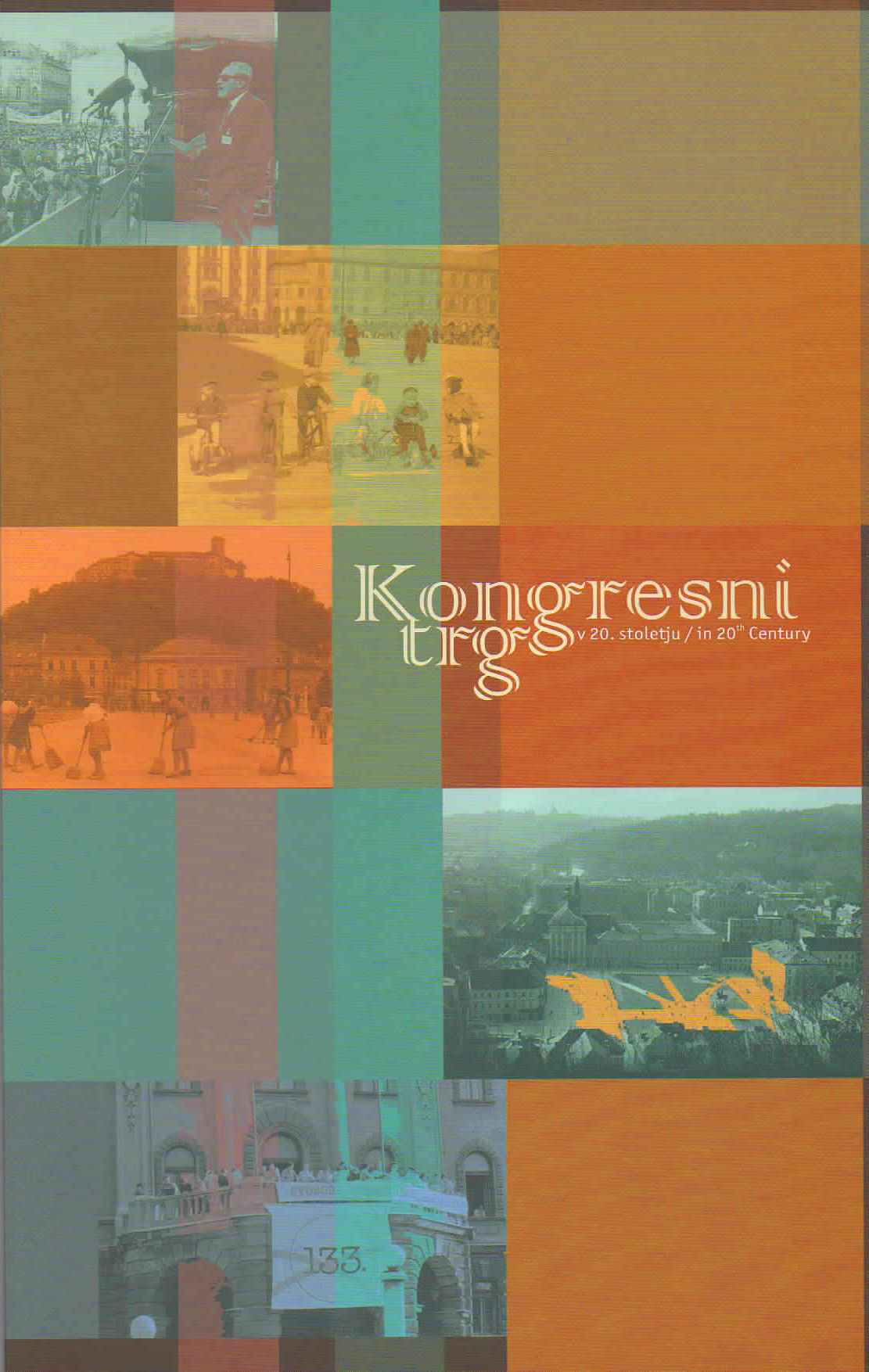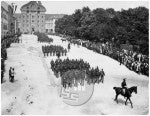Ivo Vraničar / Kongresni trg (Congress Square) in 20th Century
Ivo Vraničar / Kongresni trg (Congress Square) in 20th Century
Couldn't load pickup availability
Secured and trusted checkout with:

The space of Kongresni trg obtained its present extent at the beginning of the 19th century. The site of the former Capuchin monastery was re-landscaped, the moats filled in and the crumbling buildings demolished because of the Congress of the Holy Alliance. The Austrian emperor, Russian tsar and Neapolitan king and many political leaders attended the Ljubljana Congress of 1821. The Austrian emperor resided at the palace of the vice-governor, which stood on the site of the present University building. Memory of the congress is still preserved today in the names of Ulica dveh cesarjev (Two Emperors Street) and the inn, Pri ruskem carju (At the sign of the Russian Tsar).
The Ljubljana Mayor Hradecki had a park laid out on the northern edge of the square in 1824, with trees planted along the paths that crossed in eight directions. The park gained the shape of a star, so is still today called Zvezda (star) Park. Wooden fences that allowed riders and coaches movement through the park were erected soon after the park was laid out. This was the first public park in the city. It became a space of lively social life. At the turn of the century, a military band played in the park three times a week, so a bandstand, or pavilion, was set up opposite Kazina. The park was rearranged between 1928 and 1932 to the plans of the architect Jože Plečnik. The square was paved with concrete paving stones and Zvezda Park was protected with high boundary stones. Plečnik wanted to fell the old chestnuts but this was prevented by the resistance of the citizenry. The chestnuts still stood when the statue of Alexander I was erected in 1940. Plečnik's work was continued by Boris Kobe and, in the autumn of 1940, the old chestnuts were felled and replaced with sycamores.
During the period of the Italian occupation, because of the lack of food, the surface of the park was ploughed up by the orders of the Italian authorities and vegetables were grown on it. There were also "war fields" (orti di guerra) elsewhere in Ljubljana, e.g., in the park in front of the National Museum. During World War II, in June 1943, the Italians started to build an anti-aircraft shelter in Zvezda Park. The remains were still visible several years after the war. The concrete paving stones were later covered with asphalt and some monuments were erected, which are described below. The idea of an underground garage beneath the square has existed for several years. Work began on its construction at the end of 2009 and it is expected to be completed in June 2011.
Kongresni trg has changed its name at various times. Before the 1821 congress, it was called Kapucinski trg (Capuchin Square). After the Second World War the name was changed to Trg revolucije (Revolution Square) and then to Trg osvobitve (Liberation Square). Its old name, Kongresni trg, was restored in 1991.
Digital photo editing: Sarah Bervar in Sašo Kovačič
Design: Mojca Turk
Language: Slovene, English
Size: 30 cm x 19 cm, 60 pages
Binding: softcover
Publisher: Muzej novejše zgodovine, 2011






